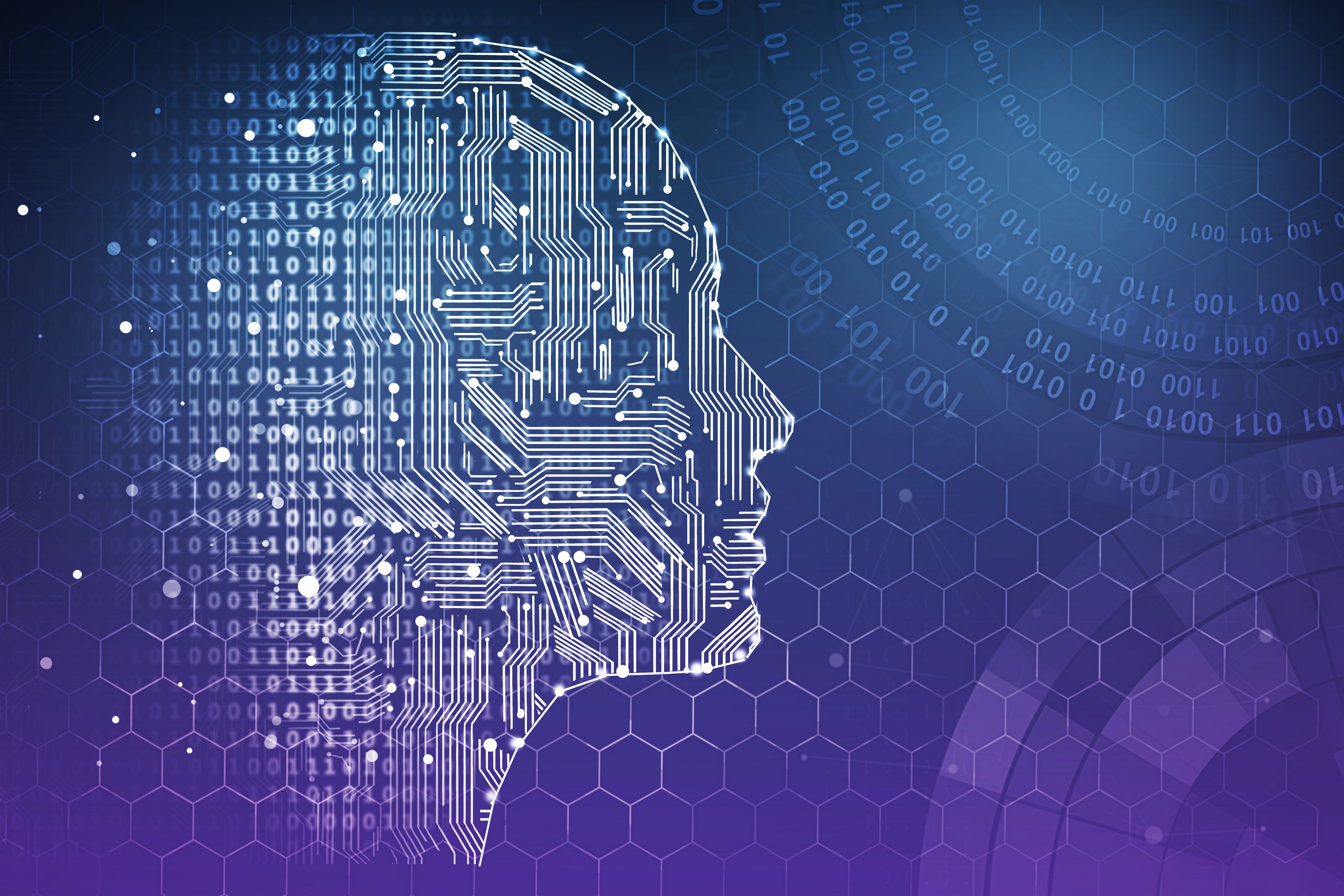Are We Living in an Artificial World?
How do you feel about the role of AI in the chromatography world?
Our lives are now surrounded by artificial intelligence (AI). From the home to the office and everywhere in between—AI has infiltrated our lives. Generative AI tools like ChatGPT can now produce content on everything from recent trends in the chromatography market, to a summary of a research paper, and even a list of questions to ask an interviewee.
Technology and innovation concept © peshkova - stock.adobe.com

In separation science, technology is advancing faster than ever, and AI and machine learning (ML) can help to enhance the accuracy, efficiency, and automation of analytical methods. Chromatography and mass spectrometry (MS) can generate massive amounts of data that require interpretation. The use of AI in chromatography can have a transformative effect, enabling faster and more accurate data processing (1).
Laboratories are increasingly incorporating AI to automate analytical workflows, from sample preparation to data reporting. Robotic systems coupled with AI can handle repetitive processing tasks, thereby reducing human error and increasing throughput. This is particularly useful in pharmaceutical research, where AI-driven automation can accelerate drug discovery by screening thousands of compounds in a fraction of the time required by conventional methods.
Traditional analytical techniques often focus on targeted compound identification. However, AI enables non-targeted analysis by recognizing unknown compounds in complex mixtures (2). This is particularly beneficial in environmental monitoring (for example, detecting contaminants such as per- and polyfluoroalkyl substances [PFAS] [3]) and forensic science, where unknown substances must be identified quickly and accurately. ML can also enhance chemometric analysis, identifying correlations between chemical properties and instrumental responses.
Despite all of the positive impact that AI is set to have on analytical science, there are still some drawbacks. One of the biggest hurdles is the amount of data that ML requires (4). While it can process this data rapidly, an experienced scientist is still needed to interpret and validate the results, and this all takes time. There are often many variables involved in chromatographic analysis, meaning interpretation can be difficult. Transferability across systems can be a stumbling block, too. Moreover, the cost to access the computational power needed for the analysis can be prohibitive to some laboratories. It also takes time to acquire the skills needed to leverage these new technologies. Training is a key factor here. It is imperative that, for both instrument control and data processing, separation scientists are taught the operating principles of a system rather than treating its components as “black boxes.” This approach will enable them to effectively interpret the results of separations-based analyses, regardless of their increasing complexity (5). In my view, training and all its associated aspects are the key issue here.
AI and machine learning are undeniably in it for the long haul in analytical chemistry, helping to enhance efficiency, accuracy, and automation. While challenges remain, continued advancements in AI-driven tools, along with improved data quality and interpretability, will further integrate these technologies into scientific workflows.
How do you feel about the role of AI in the chromatography world? Please comment and continue the discussion.
References
(1) Prasad, S. K.; Kalpana, D. Automation in Analytical Chemistry: The Role of AI in Chromatography.Int. J. App. Pharm.2024,16(3), 14–21.
(2) Workman Jr., J. Artificial Intelligence On Artificial Intelligence In Separation Science.The Column2024,20(6), 21–24.
(3) Su, A.; Cheng, Y.; Zhang, C.; et al. An Artificial Intelligence Platform for Automated PFAS Subgroup Classification: A Discovery Tool for PFAS Screening.Sci. Total Environ.2024,921, 171229. DOI: 10.1016/j.scitotenv.2024.171229
(4) Van Henten, G. B.; Bos, T. S.; Pirok, B. Approaches to Accelerate LC Method Development in the Laboratory Using Chemometrics and Machine Learning.LCGC Eur.2023,36(6), 202–209. DOI: 10.56530/lcgc.eu.rh7676j5
(5) Grinias, J. P. Navigating the Future of Separation Science Education: A Perspective.Chromatographia2022,85, 681–688. DOI: 10.1007/s10337-022-04182-8
New TRC Facility Accelerates Innovation and Delivery
April 25th 2025We’ve expanded our capabilities with a state-of-the-art, 200,000 sq ft TRC facility in Toronto, completed in 2024 and staffed by over 100 PhD- and MSc-level scientists. This investment enables the development of more innovative compounds, a broader catalogue and custom offering, and streamlined operations for faster delivery. • Our extensive range of over 100,000 high-quality research chemicals—including APIs, metabolites, and impurities in both native and stable isotope-labelled forms—provides essential tools for uncovering molecular disease mechanisms and exploring new opportunities for therapeutic intervention.
New Guide: Characterising Impurity Standards – What Defines “Good Enough?”
April 25th 2025Impurity reference standards (IRSs) are essential for accurately identifying and quantifying impurities in pharmaceutical development and manufacturing. Yet, with limited regulatory guidance on how much characterisation is truly required for different applications, selecting the right standard can be challenging. To help, LGC has developed a new interactive multimedia guide, packed with expert insights to support your decision-making and give you greater confidence when choosing the right IRS for your specific needs.

.png&w=3840&q=75)

.png&w=3840&q=75)



.png&w=3840&q=75)



.png&w=3840&q=75)




